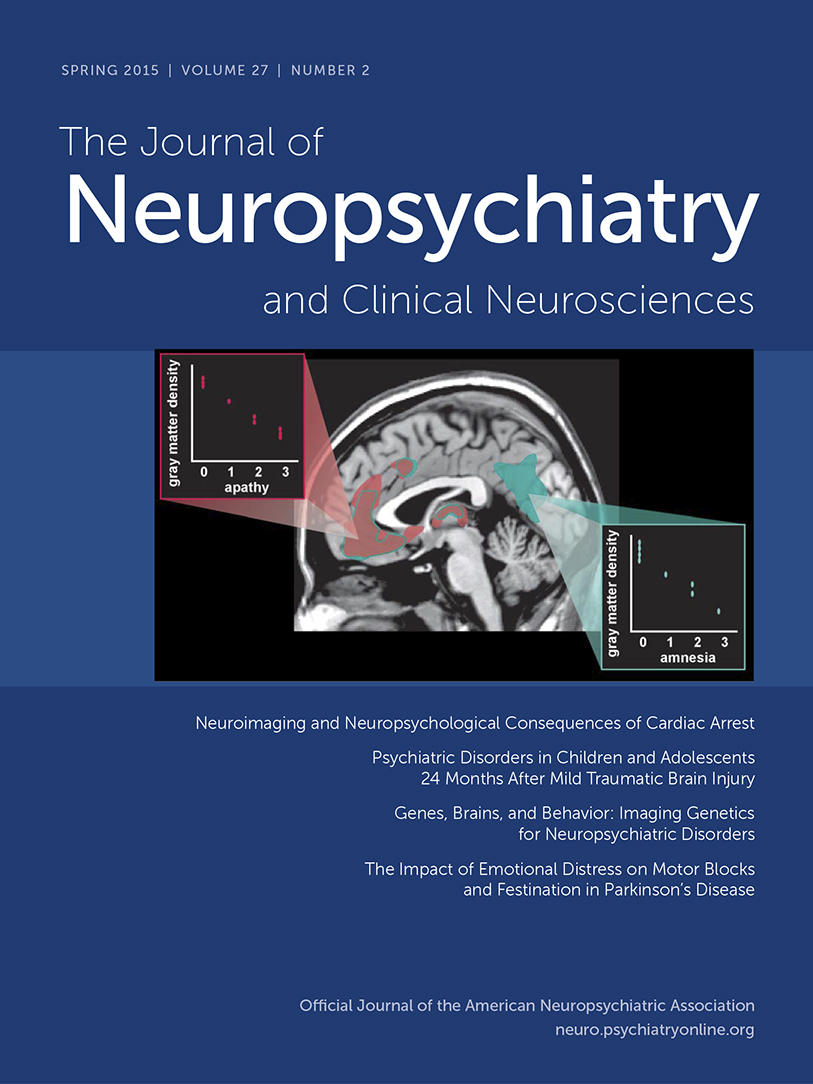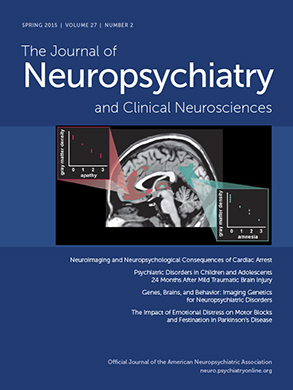To the Editor: Low-frequency repetitive transcranial magnetic stimulation (rTMS) over the left temporoparietal cortex is used in treating auditory hallucinations (AH) in schizophrenia and related disorders with a moderate effect size but results for other rTMS paradigms are disappointing so far.
1 Recent researchers have used different protocols to explore effectiveness of rTMS using bilateral rTMS though left-sided rTMS showed the maximum benefit.
2 High frequency priming stimulation appears to enhance the response of low-frequency rTMS treatment in patients with treatment-resistant depression by virtue of modification of neural activity and long-term depression (LTD) induced by rTMS, although its effectiveness in schizophrenia to treat AH remains unclear. We present a patient with refractory AH who was treated with theta priming of standard left-sided low frequency rTMS protocol.
A 40-year-old, right-handed man presented with 19 years of continuous illness characterized by auditory hallucinations and delusion of persecution. He was treated with typical and atypical antipsychotics, including risperidone, haloperidol, clozapine, and fluphenazine, either as monotherapy or in various combinations over more than 16 years and had received electroconvulsive therapy during inpatient treatment. These interventions provided transient improvement in his general clinical condition and suspiciousness, but distressing hallucinations continued despite them. He was diagnosed with treatment refractory schizophrenia as per Kane’s Criteria.
3 He was on injection flupenthixol 20 mg/ml/week and risperidone 4 mg/day for 4 months for the index consultation. He reported auditory hallucinations that were derogatory, at times commanding, one to two times per day for a variable period of time. Baseline severity rating was done using Auditory Hallucination subscale of Psychotic Symptom Rating Scale (PSYRATS-AH)
4 and Positive and Negative Syndrome Scale (PANSS)
5 by a rater (V.K.L) who was blind to the treatment protocol, after which the patient was taken up for a course of rTMS treatment. Baseline investigations including hematology, biochemistry, endocrinology, quantitative EEG, and CT scan of brain were unremarkable. After obtaining informed consent from the patient, resting motor threshold (RMT) was calculated using a figure-of-eight shaped coil with a diameter of 70mm (Magstim Rapid) (Magstim Inc., Whitland, UK). After this, rTMS was given at 1 Hz at a point midway between T
3-P
3 as per 10–20 international system of electrode placement in EEG representing left temporoparietal region at 90% of the RMT (total 900 stimulations), which lasted for 16 minutes. Prior to each treatment, priming stimulation was provided at 6 Hz (theta stimulation) with 20 trains of 20 stimulations each lasting for 5 seconds with 25 seconds intertrain interval (total of 400 pulses) at 80% of the RMT over ipsilateral point representing left temporoparietal region. The same protocol was continued every day for 10 days with a gap of 2 days after five sessions. Medications remained unchanged, and patient did not report any side effects after receiving rTMS. At the end of rTMS treatment, PSYRATS-AH score dropped from 32 to 18 after 2 weeks (scores showed maximum decrease in the domains of frequency, duration, and loudness) and PANSS hallucination score dropped from 5 to 2. The patient was followed for 8 weeks with rating every 4 weeks, during which these scores remained unchanged, and the patient continued to experience subjective decrease in frequency and severity of distressing auditory hallucinations.
Discussion
rTMS at frequencies of approximately 1 Hz facilitates LTD by decreasing the strength of excitatory synaptic connections. A significant feature of synaptic LTD is the capacity of priming stimulation to substantially enhance the capacity of 1 Hz stimulation to decrease synaptic transmission. This explains the phenomenon of metaplasticity where a preceding neuronal activity modulates the capacity for subsequent plastic change. Experiments with brief pretreatment stimulation in the 5–6 Hz range preceding 1 Hz stimulation led to increase in the ability of the latter to produce a decrease in synaptic efficacy. There is evidence that priming stimulation increases susceptibility of cortical circuits to synaptic depression by 1 Hz rTMS in the treatment of refractory depression.
6The pathophysiology underlying AH suggests hyperactivity of the neural networks regulating speech because of abnormal auditory cortex activation. Low frequency rTMS is hypothesized to reduce AH by diminishing left temporoparietal cortex excitability, a brain area involved in speech perception. Neuroimaging studies have demonstrated increased activity in the left temporoparietal auditory linguistic association cortex along with involvement of thalamic, striatal, limbic, and paralimbic regions including orbitofrontal cortex. Studies reviewing potential neuroplasticity mechanisms in schizophrenia postulate that prefrontal pyramidal neurons may directly excite mesocortical dopamine (DA) neurons in the ventral mesencephalon and indirectly inhibit mesostriatal DA cells through activation of GABAergic neurons in mesencephalic cell nuclei, which may explain the role of partial DA agonists in treatment of psychotic symptoms.
7 Stimulation at 6 Hz with the same train duration as used here at 80% of the RMT has been shown to transiently reduce cortical excitability, possibly as rTMS effects at both high and low frequencies may act to enhance cortical inhibition.
8 Modulation of the prefrontal cortex with rTMS with theta priming may enhance the LTD caused by low frequency rTMS and reduce treatment resistant AH in schizophrenia. Further study of this hypothesis using a controlled design with appropriate methodological considerations is warranted.

